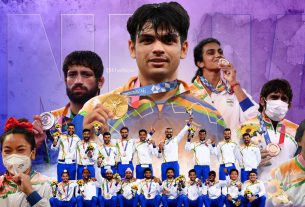Well yes, the horse does do all the work of transporting the human and itself … however that is only half the equation. Equestrian sport is an extreme sport on the human side, requiring skill, nerve, balance and timing that can be invisible to the observer.
 The recent Olympics offered up excitement and inspiration … and revealed that much of the public does not understand one of the founding events: equestrian sports.
The recent Olympics offered up excitement and inspiration … and revealed that much of the public does not understand one of the founding events: equestrian sports.
Horses challenge humans to look beyond surface appearances. Here are some examples of common misconceptions about horses and their sports:
1) The horse does all the work.
Well yes, the horse does do all the work of transporting the human and itself … however that is only half the equation. Equestrian sport is an extreme sport on the human side, requiring skill, nerve, balance and timing that can be invisible to the observer.
Most would never assume a pole vaulter was not an athlete because the pole did the actual lifting work. There are two athletes competing together in equestrian sport. The horse provides the living propulsion; the rider’s job is staying with the motion and directing: a different but not lesser challenge.
2) Horse riding is for rich people
Again we have a semi-truth that covers part of the picture. OWNERSHIP of top equine athletes is, yes, for rich people (or corporate sponsors). However ownership is separate from the actual competitive challenge. Top riders do not necessarily or even usually own the horses they ride in competition.
Riding is a professional sport requiring full time training and competition. Naturally the top riders are highly sought-after to pilot the top horses … in this way talented riders can come from any background if they have the ability. Many top riders are from very modest backgrounds and work their way into the higher levels, and that number is increasing.
3) Equestrian sports are cruel
Human history records much cruelty to horses in the past: war was cruel, ‘breaking’ horses and other mistreatment can be abusive … and these images stay with us. However, equestrian sport competitions are not won through cruelty–in fact the animals must be sound, attentive and willing, all of which abuse destroys.
The nature of horses is one of action and spirit, something quite different than other domestic animals we may be more familiar with. The feats of which horses are capable are superhuman–that is the point actually—but they are natural for the horse. Evidence that equestrian sport is not cruel or abusive can be found in the fact top competitive horses stay in the sport for many years. For example, a top horse in the London Games, Lenamore, competed successfully at the age of 19.
Equestrian sports are also ‘no-tolerance’ for drug usage, and any sign of lameness is impermissible. The ‘scandals’ by media should be read more closely.
4) The horse is ‘forced’ to compete
It is a fallacy to assume you can ‘force’ a horse to do something he/she does not want to do. They are large prey animals, much bigger than humans, and are quite capable of saying ‘no’ … much of successful equestrian sport is determined by the horse’s mood and mental acceptance of the task to perform well. Forced performance is a failed performance.
It is true that the horses in equestrian sport have been asked to extend themselves athletically … part of the inspiring nature of horses is that they will respond and give of themselves if asked. This generous aspect of horses is honored in equestrian sport.
Also, people should understand that horses have always been a working animal. They are not pets, but very special partners of mankind. Their care and maintenance are expensive, but horses earn their keep and are worthy of respect and admiration.
5) Equestrian sports are unpopular
Actually though modern horse sports are quite popular and growing. Equestrian is one of the most well-attended attractions of the Olympic Games. Every Olympic equestrian event in London sold out immediately. The different sports attract millions of spectators across the globe.
The fact that horse sports are comparatively unknown is a function of the newness of the sports in the modern era, not because they are unpopular. Where horse sports are established and promoted to the public, competitions attract crowds similar to other major spectator sports.
6) Horse sports are ‘old-fashioned’ and declining
Actually horse sports are rapidly growing, and the ability to jump high is a very new discovery in horsemanship. Though some equestrian sports are ancient and obsolete, such as chariot racing and jousting (which is making a comeback though!), modern sports have taken their place and are bringing horses to new generations.
Perhaps the sense of decline comes from the recent ending of the horse’s role as mass transportation. The past century saw a huge change in horsemanship as the world’s cavalries were disbanded and actual horsepower was replaced by tractors and automobiles. Fortunately, intriguingly, at the same time new horse sports began to become popular and are still growing today.
7) Only a few nations compete
This claim was true in the first part of the 20th century when modern equestrian sports were being organized, but now the rest of the world has discovered them. Europe was the birthplace for many modern horse sports and is still its center, but virtually all nations have a historical tradition of horsemanship and the sports have spread worldwide.
The world equestrian body, the FEI, lists over 140 member nations … 49 countries competed in the London Olympic Games, from a competitive field in which many more did not qualify. Horse sports thrive in the Americas, Australia, Europe and South Africa, and recently the sport has taken hold in the Middle East and is gaining interest in India and Asia.
8) Horse sports are ‘easy’ … you just sit there.
Actually you ‘stand’ on the horse for most competitive sports; the form is similar to a skier’s position and has similar demands. The additional test is the unpredictability of the horse in motion.
In riding it is important to move with the horse and keep distracting motion to a minimum for the sake of the animal’s focus and balance: the appearance of sitting and doing nothing is actually indication of good riding, not ease.
9) The Olympics are for human athletes
The original Olympics were ½ horse show, ½ track meet (and poetry contest). The Games were never only about human excellence: instead they were about finding favor with Creation and celebrating man’s survival in nature through harmony. One could observe that, of all the forgotten events and athletic competitions in history, the Olympics thrive today and certainly benefit by equestrian inclusion.
10) Horse could do better w/out riders
It is the union of horse and human that produces the performances seen. Though obviously the human cannot win a race or contest a big jumping course on foot–it is less obvious that the horse needs the human direction and assistance.
Using jumping as one example, equine vision is almost 360 degrees (a horse’s eyes are on side of its head) but the animal has limited depth perception: it is human guidance and balancing that allows the athletic performance over large obstacles. Other horse sports are a similar mix of human and horse cooperation: one of the amazing, symbolic aspects of horsemanship is that horses and riders together can do what neither can do alone.
Support humane equestrian sport and you support horses
Horses have chosen to be our partners, and have helped mankind build civilization. Today horses have the chance for a much better life and relationship with people through recreation and sport. This new day in horsemanship deserves support and acceptance, for it is helping fulfill the potential of our joy with horses, well cared for and honored.




